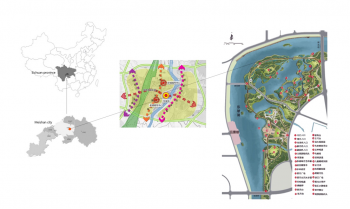Meishan Dongpo Urban Wetland Park - Sichuan Province, China
Dongpo Wetland Park aims to allow for the provision of connected multifunctional green spaces and to ensure the sustainable development of the city while retaining the original wetland environment.
It further aims to provide a new green and open leisure space for urban residents. The original wetland has been preserved with the aim to maintain regional biodiversity and to improve the water quality of the area.








